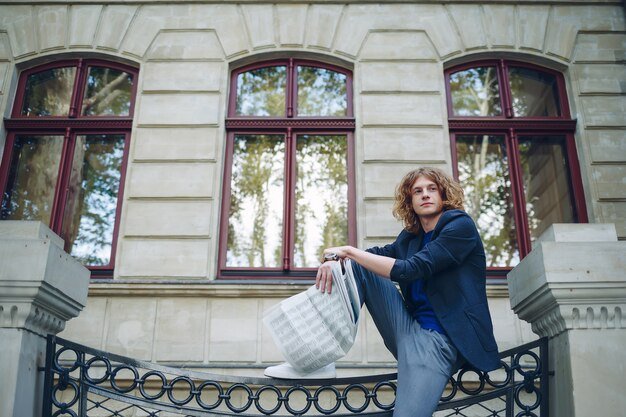Ruderne: A Deep Dive into the World of Danish Window Design
The world of window design is vast, with different regions developing unique styles that not only cater to aesthetic preferences but also address practical needs. Among these, Danish window designs have stood out for their minimalist charm and high functionality. One such popular design is “Ruderne,” a term that refers to panes or small window sections in Danish architecture. This article delves into the significance of Ruderne, its historical context, modern applications, and why it remains a top choice in window design today.
The Origins of Ruderne
The concept of Ruderne, referring to small panes of glass separated by wooden or metal frames, can be traced back to the 17th century. Denmark, with its cold winters and moderate summers, required architectural innovations to maintain warmth while letting in natural light. Large glass panes were expensive and difficult to produce, so smaller panes framed in a grid-like structure became a practical solution. These small panes, or “Ruderne,” were both cost-effective and structurally sound.
Early Danish homes, particularly those built in the rural countryside, often featured Ruderne windows. These windows provided an aesthetically pleasing design while fulfilling the functional need of insulation. Over time, this style evolved, and the craftsmanship behind the construction of Ruderne became highly revered, with artisans using locally sourced materials to enhance durability and weather resistance.
The Aesthetic Appeal of Ruderne
One of the reasons Ruderne has stood the test of time is its timeless appeal. The design of small, symmetrical panes fits perfectly within the minimalist Scandinavian aesthetic. The clean lines and geometric patterns create a balanced look, making Ruderne windows a popular choice for both traditional and modern homes.
In contemporary architecture, the use of Ruderne is often seen in renovation projects where homeowners want to preserve the historical charm of older buildings. The grid pattern of the small panes can be both decorative and practical, allowing architects to create intricate designs without compromising functionality. Whether it’s a rustic cottage in the Danish countryside or a modern urban apartment, Ruderne windows add a touch of elegance that complements various architectural styles.
Functionality and Energy Efficiency
While the aesthetic aspect of Ruderne is undeniable, its functionality remains one of its strongest selling points. In a country like Denmark, where winters are long and harsh, the need for effective insulation is critical. The design of Ruderne windows, with their smaller panes, helps reduce heat loss compared to larger single-pane windows. The grid structure also makes it easier to replace individual panes if they are damaged, rather than having to replace the entire window.
Modern advancements in window technology have allowed for the incorporation of double or triple glazing in Ruderne designs. This not only enhances energy efficiency but also improves sound insulation. For homeowners in urban areas, where noise pollution can be an issue, Ruderne windows provide a solution that maintains both the aesthetic and functional benefits of traditional designs while adapting to modern needs.
Ruderne in Modern Architecture
Despite being rooted in history, Ruderne has found its place in modern architecture. Today, architects and designers are increasingly blending traditional designs with contemporary materials and technology. This fusion creates a harmonious balance between old-world charm and modern functionality.
For example, modern Ruderne windows might use aluminum or composite frames instead of traditional wood, making them more durable and resistant to the elements. Some designs even incorporate smart glass technology, which can automatically adjust the opacity of the window panes depending on the time of day or weather conditions.
Additionally, the grid pattern of Ruderne windows has inspired many modern variations. Designers can now experiment with different shapes and configurations, moving beyond the traditional square panes to incorporate triangular or hexagonal designs. This flexibility allows Ruderne windows to be customized to suit the needs of individual projects, giving architects the freedom to be creative while still adhering to the principles of Danish window design.
Environmental Benefits
Sustainability is becoming an increasingly important consideration in modern architecture, and Ruderne windows offer several environmental benefits. As mentioned earlier, their design contributes to energy efficiency, reducing the need for artificial heating and cooling. By using locally sourced materials and focusing on long-lasting craftsmanship, Ruderne windows also minimize the carbon footprint associated with production and transportation.
Moreover, many manufacturers of Ruderne windows are adopting eco-friendly practices in their production processes. This includes the use of sustainable wood for frames, energy-efficient glazing, and recyclable materials for frames and hardware. As more homeowners and builders prioritize sustainability, Ruderne windows provide an eco-friendly option that aligns with both aesthetic and functional demands.
Why Choose Ruderne?
There are several reasons why Ruderne remains a popular choice in window design. First, its historical significance and timeless appeal make it a versatile option for both traditional and modern homes. The clean lines and grid structure offer a minimalist aesthetic that complements the Scandinavian design ethos, while the smaller panes provide functional benefits such as improved insulation and easier maintenance.
Second, Ruderne windows are highly customizable.The incorporation of modern technologies, such as double glazing and smart glass, means that Ruderne windows can meet the demands of contemporary living without sacrificing their classic charm.
Lastly, Ruderne windows are an eco-friendly option for those looking to reduce their environmental impact. With energy-efficient designs and sustainable production methods, these windows offer a solution that not only enhances the beauty of your home but also contributes to a greener future.
Conclusion
Ruderne windows have come a long way from their humble beginnings in rural Denmark. Today, they are a symbol of both tradition and innovation, blending classic design with modern technology to meet the needs of contemporary homeowners. Whether you’re renovating a historic property or building a new home, Ruderne windows offer a timeless, functional, and environmentally conscious option that will enhance the beauty and comfort of any space.





Post Comment